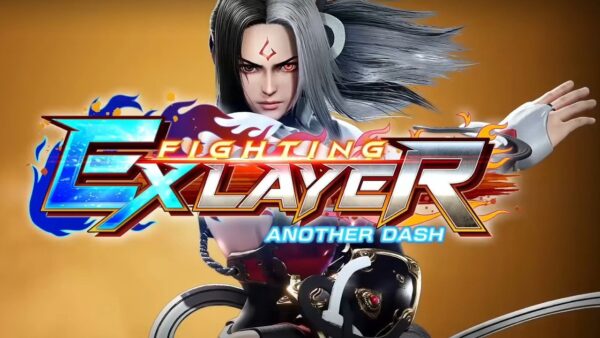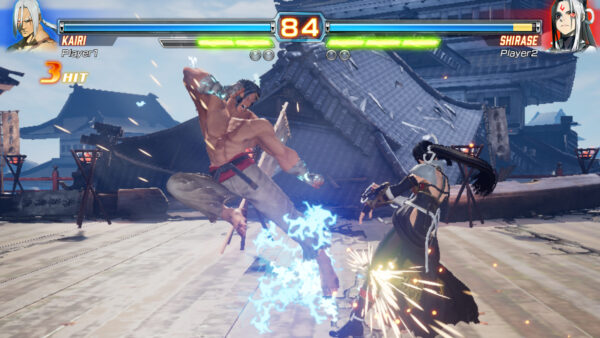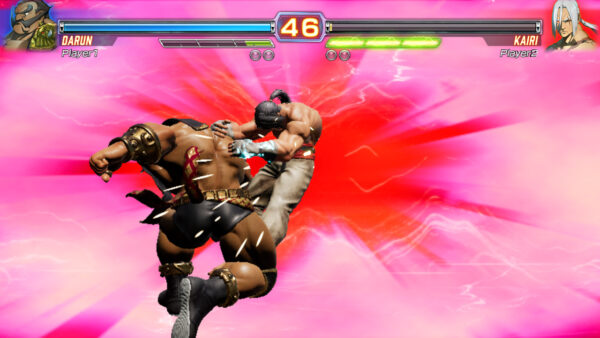
Fighting games are amazing, which is something everyone can agree on, and some of the best games were made by Capcom. An interesting piece of Capcom and Street Fighter’s history is the Street Fighter EX series, which was actually made by the company Arika. Along with the Street Fighter characters, gamers were introduced to a new cast of characters that Arika would maintain ownership of after their deal with Capcom ended. Arika would reuse some of the characters in Fighting Layer with Namco, but twenty years later, Arika brought them back again in a self-published original fighting game.
Fighting EX Layer was well regarded by players for the most part, with criticism going to the Gougi mechanic, which functioned similarly to the gems in Street Fighter x Tekken. In 2021, a new version was made for the Nintendo Switch known as Fighting EX Layer: Another Dash. While this new version suffered graphically, it also removed the Gougi system and replaced it with traditional moves and inputs

Fighting EX Layer: Another Dash is home to an interesting gaggle of characters like Darun Mister, Skullomania and Garuda to name a few, while also having a guest in the form of Terry Boggard from SNK. Each of the 18 total characters feels great to play as and learning each one is a step that is highly recommended. Some of the characters show the Street Fighter roots of the series, while others show off a more original flair.
Fighting EX Layer uses the same input style as the Street Fighter series, featuring six buttons and fighting on a 2.5D plane, but the combo system has a unique Arika touch. Arika replaced the Gougi mechanic with new EX abilities such as an activating dashing (EX Dash), and counterattack (EX Illusion) while expending meter. Some moves from the base game have been reworked and running has been removed, replaced with the aforementioned dashing.
Many of these moves are used to launch into combo chains that skilled players will grasp, and newcomers will learn, in an inviting way. The removal of backstepping and running does make the game feel slower though, so players who are familiar with the original version may need time to adjust. This is not a port of that original version game, which Arika emphasized beforehand, but is more of a reimagining for Nintendo Switch.

Among the other changes is the alteration of the overhead attack into a guard break move, something that really helps out with the combo system. This is not the most advanced combo system like in Killer Instinct, but once players learn the game, they will be able to chain together combos with regular, special, and super attacks with relative ease. This is thanks to the game’s fighting engine which Arika designed well and lets the game hit a consistent 60 FPS on the Switch with little if any hiccups.
Fighting EX Layer: Another Dash does have some struggles, however, with their online component. Another Dash uses a different style of net code than the original game and having some matches is a bit of a struggle. This is not to say that the connections are bad online, but rather that finding matches can be difficult at times whether in ranked or casual, with player skill varying to a great degree. The actual online connection in the matches is excellent, however, and there were no technical issues there. It is just that Arika could be doing more to help maintain the game’s online population and ensure that matches are not made with players of vastly different skill levels, so an actual challenge can be had.

Fighting EX Layers has an arcade mode as well, with three difficulty settings and yet it feels like there could have been more. Many fighting games are providing more single-player content now and the experience is a bit barebones. This is especially the case with the training mode which feels basic compared to fighting games from 2011.
The last thing to mention is that Arika handled the release of Fighting EX Layer: Another Dash in a rather odd way. There is a base version that is free with four characters, Kaira, Shirase, Darun Mister, and D. Dark and no online components, while gamers can pay to unlock the rest of the content, which includes all modes, costumes, and characters. The price isn’t bad though, so players who like what they see from what is essentially a demo, can check out the full game soon after.
Images were taken from Nintendo.co.uk

